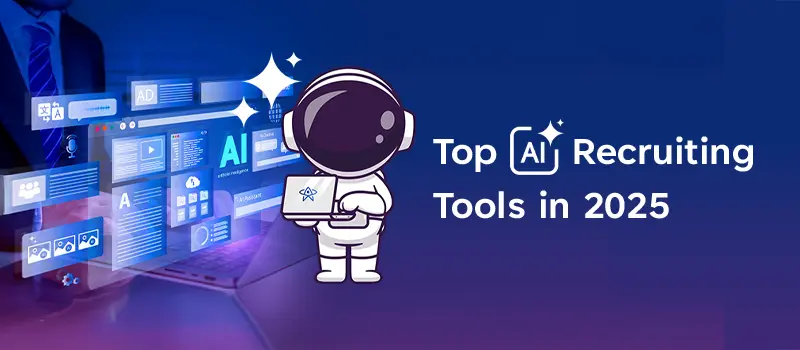Tech Layoff: Reasons and Impacts Across Employment Sector

Did one of your family or friends come under the tech layoff storm? Did your company lay off colleagues in one of the rounds of tech layoffs? Or, are you not even part of the tech industry and still witnessed mass layoffs? If you are landing on this blog, chances are you answered yes to one of these questions.
Right after thought the pandemic seemed to have retracted its spread, tech layoff seems like another contagion among employers that’s already affected more than 150,000 individuals in 2022 end. Unfortunately, the trend has continued into 2023, with a staggering 68,500 more job cuts occurring in January alone [1]. Moreover, the current hiring trend reflects tech lay off is not settling soon. As situation worsens, not just employees, but employers also scramble to assess reasons, repercussions and recourse. So, naturally, all eyes are on recruiters. And these are what we discuss in this article.
While we bring you to speed of tech layoff news and share tips on hiring during layoffs, we’ll also touch how AI hiring tools can help strategize your hiring trend in 2023. Irrespective of if you are in tech industry or otherwise.
Tech layoffs from eyes of the tech giants
Firstly, let’s catch up with the figures of tech layoffs and how those helming these tech giants are explaining the treacherous situation.
Google (by Alphabet)
Alphabet had largely avoided layoffs until 2022 end, but then Google let go around Google, 12,000 people from its workforce late in the January. Sundar Pichai, Google CEO, sent an email[2] to Googlers stating along that they had hired for a different economic reality than the one faced today.
Meta
In November 2022, Mark Zuckerberg confirmed that the company was cutting 10% of the company workforce[3], amounting to 11,000 roles. He blamed the layoffs on Meta betting big during Covid, believing the accelerated growth would continue.
Amazon
In early January, Amazon blamed a staff leak on having to announce huge redundancies earlier than expected, with 18,000 at the company expected to lose their jobs. The company had already made around 10,000 roles redundant just two months earlier[3] .
Microsoft
Microsoft announced 10,000 job cuts in mid-January 2023 after several minor layoffs in late 2022. The CEO, Satya Nadella, assured employees in an email that less than 5% of the company would be affected and that strategic hiring would continue[4].
What caused the tech layoffs?
While there are statements (and emotional outbursts as well) behind the explanation of tech layoffs, we wonder why didn’t no hiring trend signal towards this? Or there was, but the lofty candidate-driven market blinded us all somehow? Now that we are in the midst of it, reflecting back can help us get to the bottom of it the better.
Uncertainty in the economy
The economy as a whole has returned to its pre-pandemic growth trajectory, with real GDP growing 2.1% in 2022, reports Statista. However, experts predicted that a swift recovery could also mean a slowdown or even a recession. Experts at Knowledge at Wharton[5] point, “…It’s an ingrained mentality that layoffs are a company’s emergency strategy when demand for its products and services dwindles…”
Decline in e-commerce
An IMF research[6] cited that e-commerce activity in the US has either plateaued or declined to pre-COVID-19 levels. This, coupled with the world’s return to pre-pandemic normalcy, has led to significant tech layoffs. During the pandemic, companies hired extensively, but as the demand for labor decreased, they no longer require as many employees
Investor pressure
Following the 2021 tech boom, venture capitalists become concerned about potentially lower profits for companies and pushed for dramatic job cuts to lessen expenses. Reportedly, TCI Fund Management asked Alphabet to “take aggressive action” and reduce headcount; while Altimeter Capital criticized Meta for drifting into “the land of excess.”
Indications of industry maturity
The turn of the 21st century is considered that of the tech boom. After 25 years or so, it’s only natural for tech companies have declining count of new customers. Whereas, they might consider diversifying products or expanding to other countries but when these strategies fail, it has no choice but to lay off workers.
Who were the most impacted by the tech layoff
As per a data intelligence firm’s[7] report, interestingly, the tech laying off, but techies are not he only ones losing the job. Their sample figured revealed a mix of professionals hit by this trend —27.8% worked in HR & Talent Sourcing, while software engineers came in second with 22.1%. Marketing employees followed them with 7.1%, customer service with 4.6%, PR, communications & strategy with 4.4%, etc. The distribution of layoffs by position at Twitter, Amazon, Meta, Microsoft, and Google is very similar.
Interestingly, the insight about HR roles being affected the most makes sense. With hiring freezes and mass layoffs in place, recruitment teams need to be trimmed. This could also indicate that the new wave of recruitment tools especially powered by the AI.
Impacts of tech layoffs across the employment sector
Corporate leadership tends to follow a herd mentality, as demonstrated by past hiring trends that have triggered actions and created momentum for both workforce expansion and downsizing. When one or more companies within a sector lay off workers, it provides cover for other companies to do the same. And then the trend jumps industries as now we witness layoffs are ranging from media companies to Wall Street as well [8]. So, we are likely to see the tech layoff counts inflate. Do note that these figures do not include downstream layoffs, such as those in advertising agencies or manufacturing due to reduced ad spend and product orders, respectively. Plus, there are always voluntary departures for a variety of reasons.
The laid-offs, on the other hand, mostly high-skilled and experienced professionals, may cause the recruitment eligibility bar to raise higher while being open to lesser salary. These industry corrections may be a sign that the tech industry is aligning with other established parts of the market.
How should a recruiter cope with in the aftermath of layoffs
Like we mentioned in the beginning, whether it’s a firing or hiring trend in the employment market, recruiters are put on the spotlight. Now depending on whether you are part of the company that’s laying off or not, the environment of your workplace would differ wildly. You may be required to lay off employees with proper legalities, may have to keep the remaining employees motivation intact, and also be planning to rehire.
So, taking a methodological approach in each case, below we discuss your best course of action.
To layoff
- Define business reasons and criteria for layoffs to fairly choose the people
- Understand and comply to Federal and state laws of layoffs (like WARN Act[9])
- Consider severance packages and other workers compensation
- Hire an outplacement firm to help transitioning employees
- Communicate to both outgoing and remaining employees with empathy
To rehire
- Emphasize employee value over numbers
- Assess resilience mindset of candidates
- Focus on employer branding for the long-term
- Diversify talent pool for unconventional talents
- Provide a positive candidate experience
Key takeaways
There you go with the low down on what’s going on amidst the tech layoff in the US. There are multiple theories for its cause and predictions are also divergent depending on who you ask. But we have to take that Big Tech remains a big employer and will continue to impact various aspects of our lives. So, the recruitment requirements need to be fulfilled in an flexible manner of speed and scale.
In this regard, for all the hiring tools available, AI hiring tools makes the most economic sense. For AI tools like Leoforce by Leoforce, not only help with making data-backed intuitive hiring decisions but also giving high ROI. To see how it can save your business in hiring cost and time, take a demo today!
FAQs
Which tech companies are laying off?
The tech companies with largest layoffs since late 2022 include Twitter, Google, Amazon, Meta, and Microsoft.
Will tech layoffs continue in 2023?
Given the tech layoff news and macro-economic situation, it’s likely that it will continue during 2023.
Should you hire during a recession?
You can and if the budget allows, take advantage of hiring during a recession as you have access to top talent and with better salary negotiation chances.
What does a recession mean for hiring?
A recession can lead to a decrease in hiring and job opportunities. Companies may implement a hiring freeze or reduce headcount to cut costs.
References
[1] https://365datascience.com/trending/who-was-affected-by-the-2022-2023-tech-layoffs/
[2] https://www.cnbc.com/2023/01/20/google-to-lay-off-12000-people-memo-from-ceo-sundar-pichai-says.html
[3] https://tech.co/news/tech-companies-layoffs
[4] https://www.computerworld.com/article/3685936/tech-layoffs-in-2023-a-timeline.html
[5] https://knowledge.wharton.upenn.edu/article/how-layoffs-cost-companies/
[6] https://www.imf.org/en/Blogs/Articles/2022/03/17/pandemics-e-commerce-surge-proves-less-persistent-more-varied
[7] https://365datascience.com/trending/who-was-affected-by-the-2022-2023-tech-layoffs/
[8] https://www.forbes.com/sites/jackkelly/2022/12/08/layoff-contagion-spreads-from-the-tech-sector-to-everywhere-else/?sh=7a5f62282fe4
[9] https://www.dol.gov/agencies/eta/layoffs/warn





